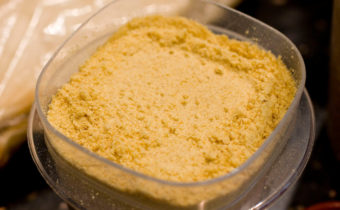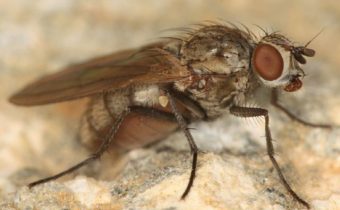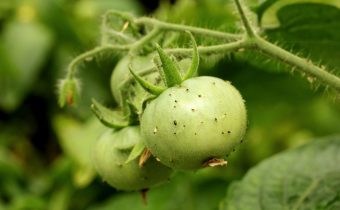How to save tomatoes from larvae of the May beetle?
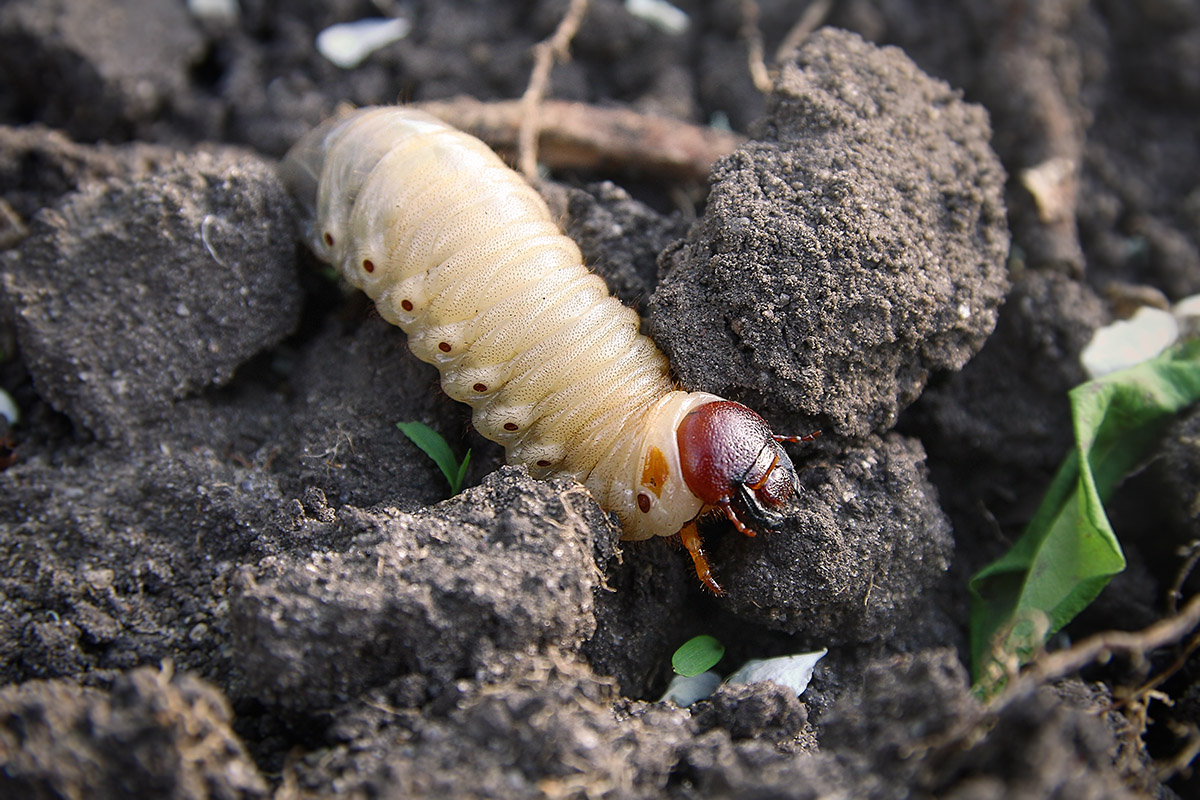
The most dangerous pest of the garden is the cockchafer, or rather its children - the larvae. Living in the soil, they feed on the roots of crops growing on the ground. Favorite delicacy of the pest is strawberry, but try to taste the juicy roots of a tomato bush as well.
Pest description
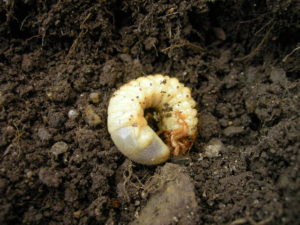
May beetle belongs to the subgenera of the Khrushchev (it is called “Khrushchev”). There are two types of insects: the western and eastern. They differ in appearance, but similar way of life.
Adult individuals begin to fly in the middle of spring. Years last about a month. All this time, beetles feed on the leaves of fruit trees. Reaching sexual maturity, females and males mate. The female lays eggs laying deep in the ground (depth reaches 15-25 centimeters). She lays up to 70 eggs at a time. The larvae (another name "furrows") in the form of twisted caterpillars are born in 20-40 days. Appeared worms have an oval body. Painted in off-white almost transparent color, six-legged. Later they become pure white with a brown head. Adult worms can reach sizes of 5 centimeters.
In the first year of life, insects do not touch the plants, as they feed on humus. In search of food, the larvae can travel great distances (up to 100 meters), moving horizontally in the soil layer at a depth of 20 centimeters. At 2-3 years of life in their diet already includes the roots of seedlings of tomatoes. Four-year-old larvae are considered the most voracious - at this time they are preparing for pupation. By the end of the summer the cockchafer degenerates.
Khrushchev larvae are omnivorous. They do not disdain any fruit trees or vegetable crops.
Where do bugs come from
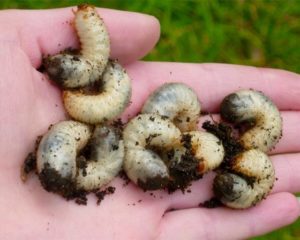
Beetles with the help of their well-developed strong wings can travel long distances. They prefer to feast on the leaves, buds and flowers of fruit trees. But not every garden-garden falls under their attention. Adult individuals, above all, think about their offspring, and therefore mainly choose sandy and sandy soils for habitat. Fertile, loose, fertilized with manure areas - they can easily be laid underground passages. And even in the depths of such soils, heat is kept even in winter, which means that the larvae can easily survive the cold period, and in spring they can reach the surface and attack freshly planted vegetable seedlings. In addition, beetles breed on nitrogen-depleted soils. Therefore, if in the fall you neglected the introduction of nitrogen-containing fertilizers, then most likely the Maybug has already managed to take a fancy to your garden.
Harm caused
The larvae, eating the roots of plants, cause a violation of the biological processes of the tomato bush. Damaged root system ceases to feed the terrestrial parts of the plant. This leads to premature drying of leaves and dropping of fruit ovaries. Over time, the depressed state of the plant leads to its death.
One adult larva is able to eat 2-3 tomato seedlings in one day.
Signs of a pest
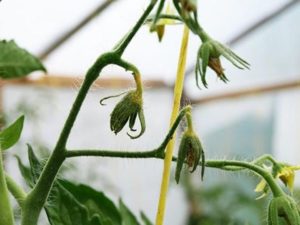
Often, the May-mother beetle chooses clean (weeded) patches of land for laying eggs, that is, without mulch. So it is easier for her to get into the soil for laying eggs.Therefore, it is in such gardens that are not deep in the ground next to the bushes of tomatoes, you can see C-shaped white worms. But closer to the fall of the larvae can be found under the mulch. This is understandable: the soil is usually mulched in the middle of summer, already after the larvae have filled the ground. They gather under the covering layer and if it is lifted, then you will find the larvae of the Khrushchev. Even without digging into the ground, sabotage can be determined by plants: because of the affected roots, the bush ceases to develop almost immediately after disembarkation. Seedlings stop growing, and if the plants had time to begin flowering, the flowers will soon fall off. If grown furrows have attacked the tomatoes, then they will definitely not live to the fruit formation stage. Without taking measures to destroy the larvae, the tomato garden will die within a week.
Control measures
Fight against the grubs of the May beetle can be conducted by folk, biological and chemical methods. The best effect will be seen when using an integrated approach, which also includes preventive measures.
Prevention
Destroying the larvae is not easy due to the fact that they live deep in the soil. Autumn digging allows the egg clutches to be on the surface. In winter, the eggs simply freeze, and accordingly, the number of beetles significantly reduced. If adult individuals are found during the backlog, they are removed manually.
In spring, tillage includes spraying with Bordeaux mixture or copper sulphate. Still it is possible to mix the earth with the pounded egg shell. Many gardeners resort to other tricks - they shed a bed with manganese solution.
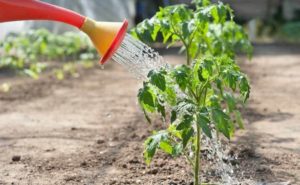
When planning a tomato bed, it is worth considering the fact that the May beetles are sensitive to some crops, such as turnips, radishes, cabbage and lupins. Their close proximity will protect the tomatoes from the invasion of this pest.
Before planting, seedlings of tomatoes will not be superfluous to add crushed cruciferous leaves to the ground.
Folk methods
The larvae of the May beetles cannot live in a soil rich in nitrogen. Therefore, when insects appear, mulching with straw and sawdust impregnated with nitrogenous fertilizers, such as urea, ammonium nitrate, and old manure, will help reduce their population. The area for planting can also be covered with mowed grass.
Mulch needs to be laid immediately after the transplanting of seedlings into the ground, when the May beetle has not yet managed to get into the soil for breeding.
Increase the concentration of nitrogen will allow planting next to the tomato bed of white clover. Nodule bacteria that inhabit the roots of clover, contribute to the accumulation of nitrogen in the soil. In addition, growing clover solves other problems, such as:
- prevents the growth of weeds;
- reduces the number of soil pests;
- improves the quality of the fruit.
As it is known, the Maybot larvae love to house a house in dung and compost heaps. Therefore, as an option, you can arrange such bait in different parts of the site. It is best to lay the manure on the film - it will act as a barrier to the penetration of pests into the soil for wintering. On the surface, they will die with the onset of stable cold.
Adult Maybugs can be caught using light traps. It is enough to hang on the area of the light bulb, and install a barrel of water under them (kerosene can be added to it). Beetles will fly into the light and fall into the water. You can catch insects with adhesive tape - newspapers are greased with sticky substance on the surface of the earth. Larvae and bugs will stick to it.
Collected adults can be used as bait when fishing for chub, ide and asp.
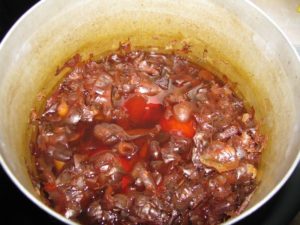
A good tool to scare the Maybugs is an infusion of onion peel. For its preparation you will need 300-400 grams of husk and half a bucket of warm water. Husk is filled with water and left to infuse for 5-7 days.The solution will be ready when fermentation begins and an unpleasant odor appears. The finished infusion is filtered and watered the soil on the beds, paying special attention to the site at the base of the bushes. Such processing can be carried out once in 10-12 days - the infusion does not harm the plants, but the benefits are enormous. A strong smell will scare away insects: the soil impregnated with a bitter substrate will be unsuitable for the life of the larvae.
Do not forget about the natural enemies of beetles and larvae. Birds (starlings, rooks, thrushes Swifts), attracted to the garden with the help of sugar baits, will be happy to catch any parasitic animals trying to spoil the landing.
Ordinary chickens allowed to the garden will significantly reduce the larval population.
Uninvited guest can be caught using ordinary salt and ammonia. It is enough to prepare a solution of 200 grams of salt, two tablespoons of alcohol or ammonia and a bucket of water. Prepare the solution watered vegetable beds.
Insecticide use
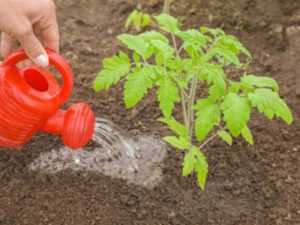
Since the larvae primarily damage the soil organs of the plant (roots), it is recommended to soak the roots of tomatoes in a solution of the drug Aktara 25 or Antikhrushch when planting seedlings - this measure will allow young bushes to have time to get stronger before they are attacked by pests.
To destroy the larvae of Khrushchev are called various insecticides. Basically, funds are diluted with water and added to the soil. The best drugs against soil pests are Antihrusch, Aktara, Pochin, Decis, Zemlin, Arrivo, Sherpa and others.
Among biological products, Nemabak, which is based on the nematode worm, does a good job with pests. It is possible to eliminate the larvae that have accumulated in the soil by treating the wells when planting seedlings with Prestige.
Conclusion
The appearance of May beetles on the site is an alarming sign. Perhaps they have already managed to colonize the soil with hundreds of small hungry larvae, which in a couple of years can cause many problems with the harvest. You can cope with the looming threat if
If you find the appearance of insects in the garden - do not hesitate, rather begin to destroy them. In no case should the larvae appear in the soil, as they are extremely dangerous for the vegetable garden.


